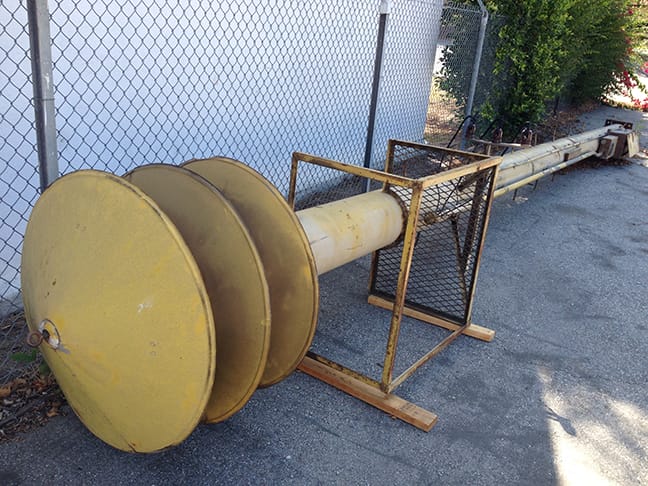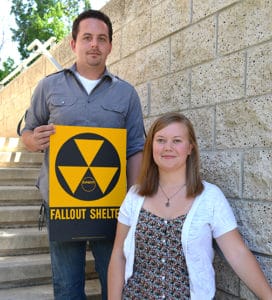Cold War LA: History Hidden in Plain Sight

Museum Studies Students Uncover Remnants of the Atomic Age in Claremont and LA
Nestled on a corner of 6th Street and Mills Avenue, just southeast of the CGU campus, Kelsey Picken, PhD student in cultural studies, and Joseph Harper, (MA, Cultural Studies, 2013) noticed something in spring 2013 that could easily elude any passerby: a Cold War era air-raid siren.
Perhaps they might have missed it, too, but they were currently enrolled in a museum studies course, “Museums 2.0: Museums Without Walls,” taught by Cultural Studies and History Professor Joshua Goode and Justinian Jampol, director of The Wende Museum (pronounced “venda”). The course focused on new approaches to museum curation and the collection at the Wende, a Culver City-based research and education institute that preserves cultural artifacts and personal histories of Cold War era Eastern Europe and the Soviet Union.

But when Picken and Harper returned to photograph the siren a few weeks later, it was gone.
They discovered that as part of the City of Claremont’s 6th Street Streetscape Project, the siren had been moved to a storage facility-cum-junkyard in neighboring Pomona. It took months of appeals to the city and several rounds of letter writing, but the students managed to have the siren moved out of storage and into the Armory building in Culver City, into which the Wende will officially move next year.
The discovery and preservation of the siren was a big victory for Cold War historians, but it represents only a fraction of the Cold War artifacts that linger throughout Los Angeles.
“There are 16 missile sites and several radar sites left over from the Nike Program that literally surround LA,” said Picken. “Most of the sites are still there, but many have been neglected or destroyed. There are public shelters underneath buildings in LA, as well.”
But the duo’s engagement with LA’s Cold War history didn’t end with the class or with the preservation of the siren. In fact, the Wende leadership was so impressed with Picken and Harper’s ideas that it is helping to actualize them as real-life exhibitions.

“[Joseph and I] came up with the idea for ‘Cold War: LA,’ a public project that would look at what was hidden in plain sight,” said Picken.
The project is two-pronged: The first step is a website that includes a timeline for LA-related Cold War events, Cold War architecture throughout the region, such as shelters and missile sites, and other resources and writings for further study. The second prong, “Cold War: Culver City,” is a web-based app that would provide a self-guided walking tour of Cold War history through that city’s main drag, the Culver City Corridor. Though the walking tour is not yet available, the Wende is currently working on procuring grant money to bring it to life.
In the meantime, Picken and Harper are conducting oral histories with veterans of the Cold War for the Fort MacArthur Museum in San Pedro; work made possible through a CGU Friedman Grant they were awarded in 2014.
“I had previous knowledge about the history of the Cold War [before the class],” said Picken, “but never realized how much of it lingers as physical and cultural remnants. Now I see it everywhere. The history, as far as I can tell, is endless.”
If you are a Cold War veteran of the Nike Program missile sites in Los Angeles and would like to contribute to the Fort MacArthur oral histories project, e-mail coldwarexhibits@gmail.com.